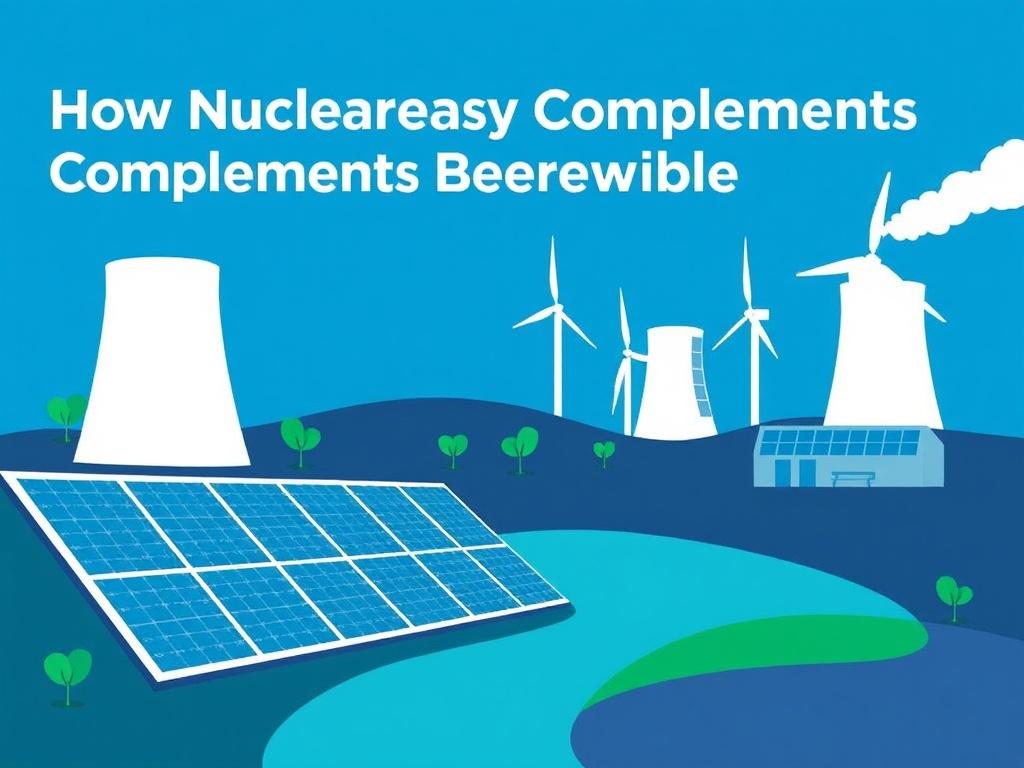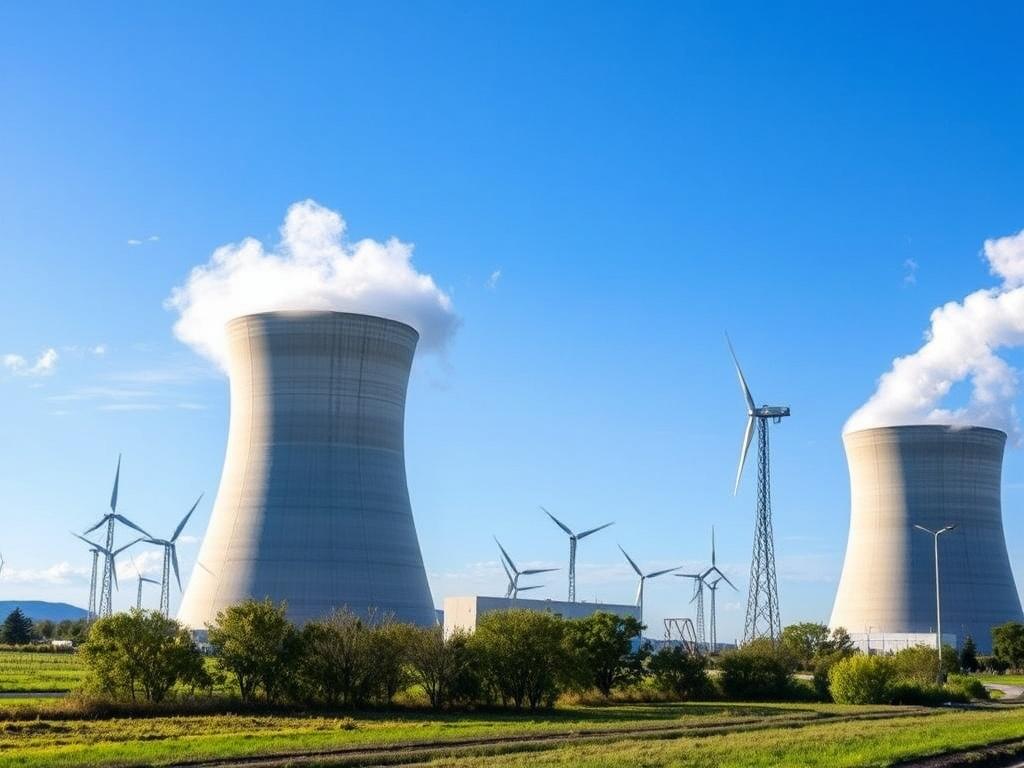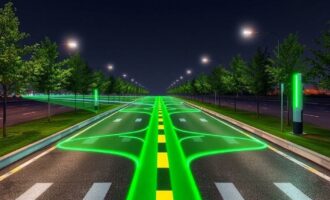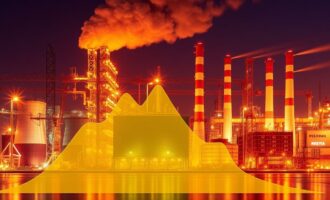- Understanding the Energy Landscape: Renewables and Nuclear Power
- The Intermittency Challenge of Renewable Energy
- Solar and Wind: Power When Conditions Allow
- Grid Storage: An Imperfect Solution
- How Nuclear Energy Enhances Grid Stability
- Baseload Power and Grid Reliability
- Complementary Dynamics in Action
- The Environmental Benefits of Combining Nuclear Energy and Renewables
- Lowering Carbon Footprints
- Reducing Air Pollution
- Nuclear Energy as a Partner in Expanding Renewable Energy
- Modern Advances in Nuclear Technology Supporting Renewables
- Small Modular Reactors (SMRs)
- Generation IV Reactors
- Economic Considerations: Cost and Investment
- Policy and Public Perception Impacting Nuclear and Renewables Synergy
- Changing Narratives Around Nuclear Power
- Integrated Energy Policies for a Balanced Grid
- The Global Perspective: Examples of Nuclear and Renewables Working Together
- Looking Ahead: The Future of Energy Systems
- Smart Grids and Energy Management
- Decarbonizing Beyond Electricity
- Investing in Innovation
- Conclusion
Understanding the Energy Landscape: Renewables and Nuclear Power
When we talk about the future of energy, two terms often dominate the conversation: renewable energy and nuclear power. Both have tremendous potential to help us reduce carbon emissions and combat climate change, but many people see them as competitors. The reality is quite different. Nuclear energy complements renewables in powerful ways, creating a balanced, reliable, and sustainable energy system. To appreciate this relationship fully, we first need to explore what renewable energy entails and the role nuclear power plays in our electricity grids.
Renewable energy sources like solar, wind, hydro, and geothermal are celebrated for their ability to generate electricity without emitting greenhouse gases. These sources harness naturally replenishing resources, making them a cornerstone of any sustainable energy strategy. However, their primary challenge lies in their intermittent nature—solar panels only produce power when the sun shines, and wind turbines rely on wind speeds that aren’t always consistent.
On the other hand, nuclear energy offers a stable, high-output option that does not depend on weather conditions. Nuclear reactors produce a continuous flow of electricity, often referred to as “baseload power,” making them an ideal partner for renewables. Together, these energy sources can tackle the challenges of energy reliability, security, and sustainability.
The Intermittency Challenge of Renewable Energy
One fundamental issue with many renewable energies is intermittency. Simply put, the sun doesn’t shine all day, and the wind doesn’t blow steadily. This variability can lead to periods when electricity generation drops significantly, requiring backup systems to maintain the power supply. This problem becomes more acute as a larger share of renewables come online.
Solar and Wind: Power When Conditions Allow
Solar panels can produce an abundance of electricity on sunny days, especially during midday when demand might be lower. Similarly, wind turbines generate power when winds are strong, typically fluctuating throughout the day. These patterns don’t always align with electricity demand, leading to surplus power at times and shortages at others. Without some form of energy storage or backup, the grid risks instability.
Grid Storage: An Imperfect Solution
Energy storage technologies like batteries are potential solutions to renewable intermittency. Large-scale batteries can store surplus electricity generated during peak production and release it when demand rises or production falls. However, current storage solutions are expensive, have limited capacity, and might not be viable for extended periods of low renewable output (for example, during prolonged cloudy or windless spells).
How Nuclear Energy Enhances Grid Stability
This is where nuclear energy enters the picture. Unlike solar or wind, nuclear power plants deliver consistent, round-the-clock electricity regardless of weather conditions. Because of this, nuclear energy serves as a dependable base load source that ensures the grid remains stable when renewable generation dips.
Baseload Power and Grid Reliability
Baseload power refers to the minimum level of demand on an electrical grid over a period. Falling short of meeting this baseline can cause outages or require costly emergency measures. Nuclear power plants operate at high capacity factors (often over 90%), meaning they run near full output most of the time. This reliability is crucial when renewables fluctuate.
Complementary Dynamics in Action
By pairing nuclear energy with renewables, grid operators can balance supply and demand efficiently. During periods of strong solar or wind generation, nuclear plants can maintain steady output while renewables soak up peak demand. When renewable output wanes, nuclear energy fills the gap, preventing blackouts or reliance on fossil fuels like natural gas.
The Environmental Benefits of Combining Nuclear Energy and Renewables
Both nuclear energy and renewable energy produce virtually no greenhouse gas emissions during operation, making them vital tools for carbon reduction. When integrated into a single energy strategy, their benefits multiply, enabling a quicker transition away from fossil fuels.
Lowering Carbon Footprints
High-carbon sources like coal and natural gas currently dominate many electricity grids worldwide, contributing significantly to climate change. Replacing these with a blend of renewables and nuclear energy drastically cuts emissions. The combination ensures constant low-carbon power, even when renewables alone can’t meet demand.
Reducing Air Pollution
Coal and natural gas plants not only produce carbon dioxide but also harmful pollutants like sulfur dioxide and nitrogen oxides, which cause respiratory problems and environmental degradation. Nuclear power and renewables avoid these emissions, improving public health and ecosystems.
Nuclear Energy as a Partner in Expanding Renewable Energy

Beyond providing backup power, nuclear energy can actively enable the growth of renewables. Here are several ways in which nuclear power promotes renewable energy expansion:
- Infrastructure Stability: Nuclear power plants provide consistent voltage and frequency that help stabilize the grid, creating a more resilient network to accommodate variable renewables.
- Hydrogen Production: Nuclear reactors can supply heat and electricity for green hydrogen production—a clean fuel and energy carrier—which supports renewable integration in industry and transportation.
- Load Following Capabilities: Advanced nuclear plants are being developed to adjust output more dynamically, ramping power up or down to better complement renewable fluctuations.
Modern Advances in Nuclear Technology Supporting Renewables
Nuclear energy is not static; it’s an evolving technology with new designs enhancing its role alongside renewables.
Small Modular Reactors (SMRs)
Small Modular Reactors are compact, scalable nuclear units designed to be safer and more flexible than traditional reactors. SMRs can operate closer to renewable energy installations, providing localized, reliable power to balance variable sources. Their lower upfront costs and enhanced safety features make them appealing partners for renewable-heavy grids.
Generation IV Reactors
Generation IV nuclear reactors are next-generation designs focused on improved efficiency, safety, and reduced nuclear waste. Some designs offer the ability to use spent fuel or produce hydrogen, which integrates well with renewable energy strategies, producing a versatile clean energy portfolio.
Economic Considerations: Cost and Investment

While renewable energy costs have plummeted dramatically in recent years, nuclear energy faces more complex economics. However, the complementary role of nuclear energy justifies its investment.
| Energy Source | Levelized Cost of Energy (LCOE) Approx. (USD/MWh) | Capacity Factor (%) | Key Strength | Primary Challenge |
|---|---|---|---|---|
| Solar PV | 20-40 | 20-30 | Low cost, scalable | Intermittency |
| Onshore Wind | 30-50 | 30-40 | Affordable and mature | Variable output |
| Nuclear Energy | 100-130 | 90+ | Reliable baseload power | High capital costs, long construction |
Despite the higher upfront and operational costs of nuclear energy, its consistent output stabilizes the grid, reduces reliance on fossil fuel peaker plants, and lowers carbon emissions. In combination with renewables, nuclear’s economic drawbacks are balanced by long-term savings on energy reliability and decarbonization.
Policy and Public Perception Impacting Nuclear and Renewables Synergy
Public opinion and government policies play a big role in how nuclear energy and renewables coexist. Many countries have embraced renewable energy subsidies, infrastructure investment, and clean energy targets. However, nuclear power often faces political resistance due to past accidents, waste concerns, and cost overruns.
Changing Narratives Around Nuclear Power
Recently, more experts and environmentalists have recognized nuclear energy’s critical role in achieving net-zero goals. Clear communication about nuclear safety advancements, waste management improvements, and the complementary benefits with renewables is helping shape a more positive narrative.
Integrated Energy Policies for a Balanced Grid
Forward-thinking policies encourage the deployment of both renewables and modern nuclear systems to build robust clean energy networks. Incentives for small modular reactors, research into hydrogen technologies, and strategic grid upgrades are part of these integrated policies.
The Global Perspective: Examples of Nuclear and Renewables Working Together
Several countries illustrate how nuclear energy and renewables coexist effectively.
- France: A leader in nuclear power, France integrates its high nuclear generation with growing solar and wind farms to maintain low carbon emissions and grid stability.
- Sweden: Sweden combines hydropower, nuclear, and renewables to achieve nearly 100% clean electricity, showcasing a balanced energy portfolio.
- China: Rapid expansion of both renewables and nuclear is enabling China to diversify its energy mix and reduce dependence on coal.
These examples emphasize that nuclear energy is not the enemy of renewables but rather a powerful complement accelerating the transition to sustainable power systems.
Looking Ahead: The Future of Energy Systems
As global energy demand grows and climate urgency intensifies, the need for reliable, clean power becomes paramount. Nuclear energy’s role in supporting renewables will continue expanding through technological innovation, smart grid design, and international collaboration.
Smart Grids and Energy Management
Enhanced grid technologies allow better coordination of nuclear, solar, wind, and storage assets, optimizing overall system efficiency and resilience. Artificial intelligence and machine learning aid demand forecasting and generation balancing in complex energy landscapes.
Decarbonizing Beyond Electricity
The combination of nuclear energy and renewables doesn’t stop at electricity. Producing green hydrogen through nuclear heat and renewable power opens new clean pathways for transportation, industrial processes, and heating.
Investing in Innovation
Future breakthroughs in nuclear fuel cycles, reactor designs, and energy storage will further strengthen the symbiotic relationship between nuclear and renewables, paving the way to a sustainable energy future.
Conclusion
In the quest for a cleaner, more sustainable energy system, nuclear energy and renewables are not competitors but powerful teammates. The continuous, reliable power offered by nuclear plants balances the intermittent nature of renewables like wind and solar, ensuring grid stability and energy security. Together, they form a robust, low-carbon backbone essential for meeting global climate goals. As technology advances and policy landscapes evolve, embracing the complementary strengths of nuclear and renewable energy will be key to powering a sustainable future that benefits economies, the environment, and society as a whole.
Как вам статья?







